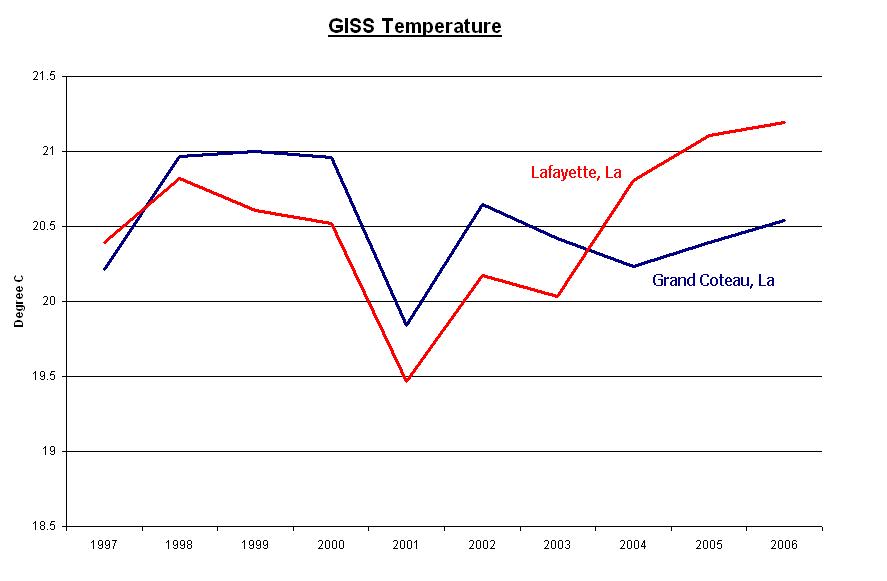

 if there is an increasing tendency for thermometers
to be in close proximity to concrete and asphalt, then they will read systematically
higher.
if there is an increasing tendency for thermometers
to be in close proximity to concrete and asphalt, then they will read systematically
higher.
An Example:
This is an official recording station that has never been moved. Instead, urban stuff got built around it:

Can you Guess when the building and parking lot appeared?

In the scientific community this effect (Urban Heat Island) is well known and is generally acknowledged to potentialy contribute a false signal. Therefore, significant effort has been taken to try and correct for this effect, statistically, and subtract it out.
This is very difficult to due in any kind of reliably manner and there
is much literature suggesting the current corrections is too small and therefore
urbanization is the main cause of the observed "warming".
While there is some validity to this in the case of the US Historical Climate Networking
data (1221 stations) in explaining the apparent surface temperature increase in the US
over the last 100 years:

Due to potential large weight given by urban stations:

It is possible to remove that bias if you have a good baseline of urban vs rural data:

The scientific issue, however, is how accurate is this baseline comparision?
For the world data, however, the temperature measurements are not as strongly dominated by urban thermometers. In addition, the slow but steady thermal expansion of the oceans clearly shows absorption of increased heat.
Here are two other raw examples that show the potential effects of urbanization on temperature data:


These two airfield sites are 15 miles apart in similar terrain. The Lafayette airfield
started to see significant urban build up starting in 2003.